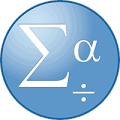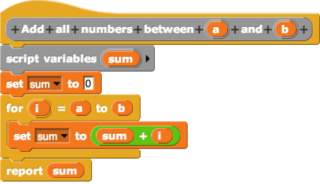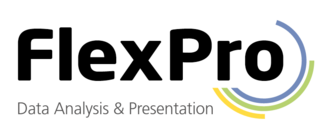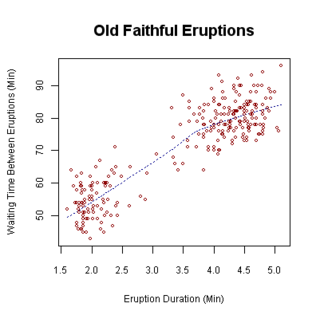
Maple is a symbolic and numeric computing environment as well as a multi-paradigm programming language. It covers several areas of technical computing, such as symbolic mathematics, numerical analysis, data processing, visualization, and others. A toolbox, MapleSim, adds functionality for multidomain physical modeling and code generation.

SPSS Statistics is a statistical software suite developed by IBM for data management, advanced analytics, multivariate analysis, business intelligence, and criminal investigation. Long produced by SPSS Inc., it was acquired by IBM in 2009. Versions of the software released since 2015 have the brand name IBM SPSS Statistics.

In computing, a visual programming language, also known as diagrammatic programming, graphical programming or block coding, is a programming language that lets users create programs by manipulating program elements graphically rather than by specifying them textually. A VPL allows programming with visual expressions, spatial arrangements of text and graphic symbols, used either as elements of syntax or secondary notation. For example, many VPLs are based on the idea of "boxes and arrows", where boxes or other screen objects are treated as entities, connected by arrows, lines or arcs which represent relations.

Scientific visualization is an interdisciplinary branch of science concerned with the visualization of scientific phenomena. It is also considered a subset of computer graphics, a branch of computer science. The purpose of scientific visualization is to graphically illustrate scientific data to enable scientists to understand, illustrate, and glean insight from their data. Research into how people read and misread various types of visualizations is helping to determine what types and features of visualizations are most understandable and effective in conveying information.
A GIS software program is a computer program to support the use of a geographic information system, providing the ability to create, store, manage, query, analyze, and visualize geographic data, that is, data representing phenomena for which location is important. The GIS software industry encompasses a broad range of commercial and open-source products that provide some or all of these capabilities within various information technology architectures.
JMP is a suite of computer programs for statistical analysis developed by JMP, a subsidiary of SAS Institute. It was launched in 1989 to take advantage of the graphical user interface introduced by the Macintosh operating systems. It has since been significantly rewritten and made available also for the Windows operating system. JMP is used in applications such as Six Sigma, quality control, and engineering, design of experiments, as well as for research in science, engineering, and social sciences.

IGOR Pro is a scientific data analysis software, numerical computing environment and programming language that runs on Windows or Mac operating systems. It is developed by WaveMetrics Inc., and was originally aimed at time series analysis, but has since then evolved and covers other applications such as curve fitting and image processing. It comes with a fully functional programming language and compiler, but many functions are also accessible through menus. IGOR Pro is primarily known for its graphics capabilities, and like Origin and other similar programs, is often used to generate plots for scientific and other publications. Other features include the possibility of extending the built-in functions with external operations (XOP) allowing data acquisition, manipulation and analysis features, communication with external devices and in principle any other task that can be programmed in C or C++.

OpenEye Scientific Software is an American software company founded by Anthony Nicholls in 1997. It develops large-scale molecular modelling applications and toolkits. Following OpenEye's acquisition by Cadence Design Systems for $500 million in September 2022, the company was rebranded to OpenEye Cadence Molecular Sciences and operates as a business unit under Cadence.
S-PLUS is a commercial implementation of the S programming language sold by TIBCO Software Inc.
Latent growth modeling is a statistical technique used in the structural equation modeling (SEM) framework to estimate growth trajectories. It is a longitudinal analysis technique to estimate growth over a period of time. It is widely used in the field of psychology, behavioral science, education and social science. It is also called latent growth curve analysis. The latent growth model was derived from theories of SEM. General purpose SEM software, such as OpenMx, lavaan, AMOS, Mplus, LISREL, or EQS among others may be used to estimate growth trajectories.

Origin is a proprietary computer program for interactive scientific graphing and data analysis. It is produced by OriginLab Corporation, and runs on Microsoft Windows. It has inspired several platform-independent open-source clones and alternatives like LabPlot and SciDAVis.

FlexPro is a proprietary software package for analysis and presentation of scientific and technical data, produced by Weisang GmbH. It runs on Microsoft Windows and is available in English, German, Japanese, Chinese and French. FlexPro has its roots in the test and measurement domain and supports different binary file formats of data acquisition instruments and software. In particular, FlexPro can analyze large amounts of data with high sampling rates.

A plot is a graphical technique for representing a data set, usually as a graph showing the relationship between two or more variables. The plot can be drawn by hand or by a computer. In the past, sometimes mechanical or electronic plotters were used. Graphs are a visual representation of the relationship between variables, which are very useful for humans who can then quickly derive an understanding which may not have come from lists of values. Given a scale or ruler, graphs can also be used to read off the value of an unknown variable plotted as a function of a known one, but this can also be done with data presented in tabular form. Graphs of functions are used in mathematics, sciences, engineering, technology, finance, and other areas.
XLfit is a Microsoft Excel add-in that can perform regression analysis, curve fitting, and statistical analysis. It is approved by the UK National Physical Laboratory and the US National Institute of Standards and Technology XLfit can generate 2D and 3D graphs and analyze data sets. XLfit can also analyse the statistical data. It includes over seventy linear and non-linear curve fitting models. Predefined categories include:
Dotmatics is an R&D scientific software company used by scientists in the R&D process that help them be more efficient in their efforts to innovate. Founded in 2005, the company's primary office is in Boston with 14 offices around the globe. In March 2021, Insightful Science acquired Dotmatics. In April 2022, the two companies consolidated under the Dotmatics brand with Insightful Science CEO Thomas Swalla leading the new Dotmatics. Dotmatics' software is used by 2 million scientists and researchers and 10,000 customers.
A bioinformatics workflow management system is a specialized form of workflow management system designed specifically to compose and execute a series of computational or data manipulation steps, or a workflow, that relate to bioinformatics.







